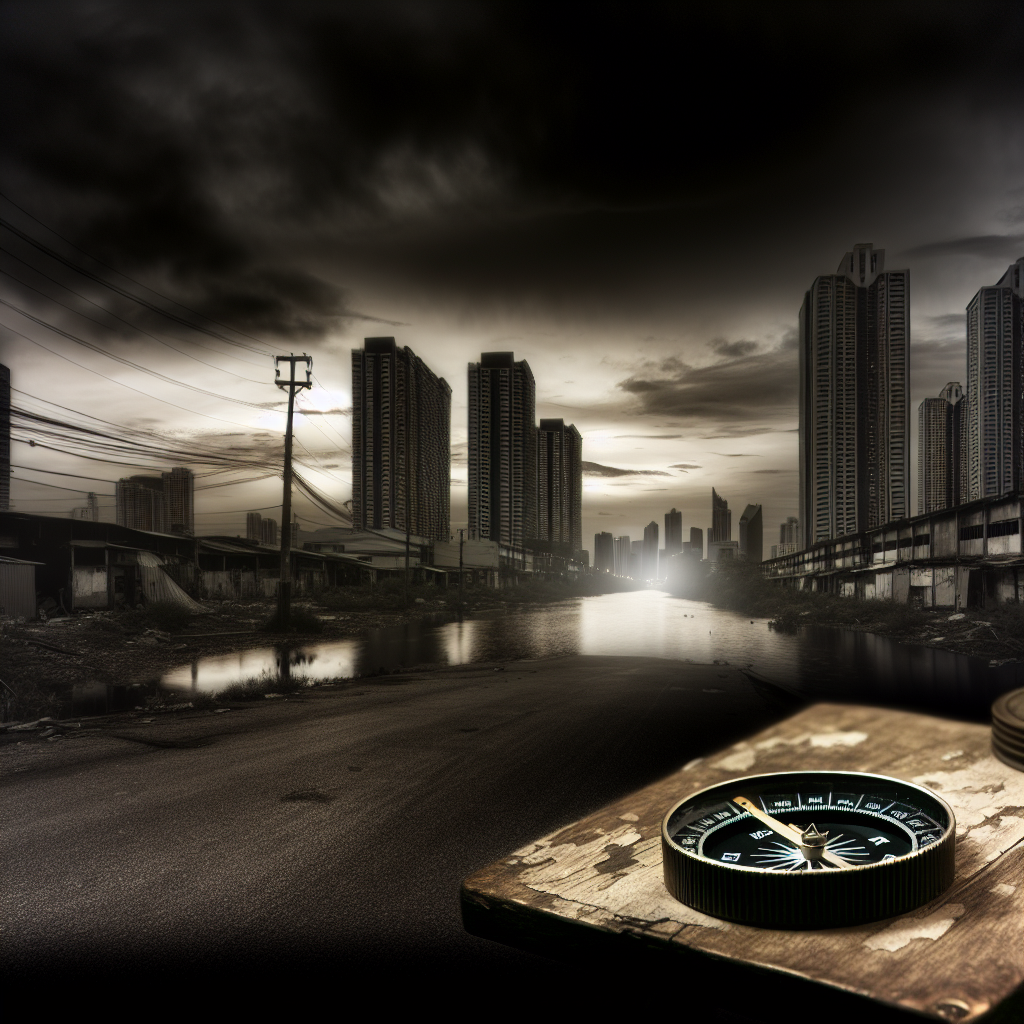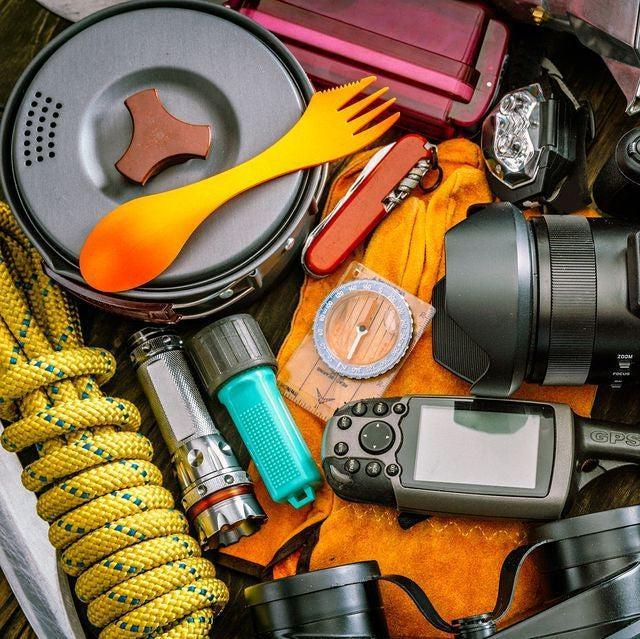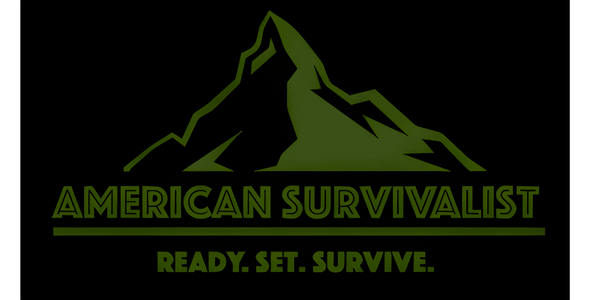
How to Navigate Without GPS (Even in Urban Environments)
Share
When the city lights flicker and the hum of technology falls silent, panic can drag you down like a lead weight. Real navigation—raw, visceral navigation—isn’t just for the wilderness; it’s your lifeline in urban chaos. I’ve navigated the darkened streets of Chicago during a blackout, maneuvered through riot-torn plazas, and found my way in foreign cities where every corner felt threatening. To be truly self-reliant, you must sharpen your internal compass and learn to navigate urban landscapes as if your survival depends on it—because one day, it just might.
Shattering the Illusion of GPS Dependence
Picture this: you’re in a bustling city, and a sudden blackout thrusts you into a world where your device is nothing but a useless brick. Over half of Americans lean on GPS, but when the power goes out or the signal drops, they’re adrift. In emergencies—whether civil unrest or a natural disaster—your smartphone becomes a ticking time bomb of vulnerability. This is the moment where your survival training must take the lead. Whether you're navigating through floodwaters in downtown Houston during hurricane season or smoke-choked streets in Sacramento during a wildfire, knowing how to navigate without technology can mean the difference between finding safety and being ensnared in chaos. Don’t let ignorance be your downfall.
Landmarks: Your Urban Survival Beacons

Cities are stitched together with a tapestry of landmarks—bridges, skyscrapers, rivers, and parks. These aren’t just visual cues; they’re your survival tools. During a blackout in Chicago, the river and towering structures became my guiding stars. In New Orleans, after a storm surge knocks out power and floods parts of the French Quarter, high ground markers like Jackson Square and the Superdome can become lifesaving reference points. Instead of floundering in the dark, I used them to pinpoint my direction and save precious time. Every landmark you learn to recognize transforms into a vital point on your mental map, honing your instincts for survival. Remember, the urban jungle isn’t just concrete; it’s your battleground.
The Compass: Your Trusty Ally
In the urban wilderness, a compass is more than a tool; it’s your steadfast ally. It doesn’t depend on satellites or power; it simply points north. With a solid orientation, the streets around you become a canvas where you can paint your route. Pairing a compass with recognizable landmarks gives you a solid grip on your surroundings. In cities like Anchorage, where winter storms can white out visibility and confuse even lifelong residents, a compass could mean the difference between making it back to shelter or wandering into deeper snowdrifts. Always have a compact compass in your everyday carry kit—you’ll be grateful when your smartphone becomes obsolete. This isn’t just a suggestion; it’s a necessity for survival.
Relearning the Lost Art of Map Reading
Paper maps don’t crash, and they don’t run out of battery—they’re timeless assets. Yet, only a small fraction of people know how to interpret them effectively. This ignorance can prove fatal during an urban crisis. Master the nuances of street grids, elevation lines, and legends. Practice folding your maps with ease; fumbling under pressure could cost you crucial time. In sprawling cities like Phoenix, where summer blackouts are becoming more common due to grid strain, a laminated map of your local area isn’t just useful; it’s essential. Don’t leave your survival to chance.
Decoding the Urban Grid
Many cities, like Manhattan, are designed with predictable grid patterns. Even as a newcomer, you can find your way by recognizing this order. Count intersections, observe street signs, and the grid will lead you home. In Denver, where snowstorms can shut down entire neighborhoods, knowing how the numbered avenues run east-west and the streets run north-south can help you correct your path even when visibility drops. It’s not sorcery; it’s simple math and recollection. Trust in your ability to navigate with confidence—because hesitation can be deadly.
Constructing a Mental Map: Navigate Instinctively
Every journey through a city—be it on foot, bike, or transit—should help you build your internal map. Pay attention to every turn, every landmark, every nuance—the scents, sounds, and shadows. These elements anchor your sense of direction. I once escaped a European city under lockdown using nothing but the memories of my surroundings. In places like Portland, where Cascadia Subduction Zone earthquakes could cripple infrastructure overnight, your mental map of safe zones and open areas could be all you have. Your mind can be your most reliable GPS; train it to navigate every day. Make every trip a training ground for your instincts.
Environmental Clues: Listen to the City
The urban environment whispers clues if you’re willing to listen. Watch the flow of traffic, note pedestrian patterns, and observe how the sunlight filters through buildings. Graffiti may signal territory, while streetlight positioning can indicate safety. In places like Detroit or parts of Baltimore, where economic collapse and emergency services lag during disaster events, reading these subtle signs could keep you from walking into danger. Learning to notice these overlooked signs could mean the difference between finding your way and getting lost. Don’t ignore what’s around you—every detail counts.
Offline Tools That Stand the Test of Time
If you’re comfortable with technology, prepare your devices for a worst-case scenario. Apps like Maps.me and Citymapper allow offline map downloads. But remember, these should supplement your skills, not replace them. When the lights go out—like they did during the Texas grid collapse of 2021—rely on your instincts, your physical compass, and your training. Technology can fail you—don’t let it be your only lifeline.
The Importance of Wayfinding Signage
Urban spaces often feature pedestrian wayfinding signs—those tall kiosks marked with maps and “You Are Here” indicators. Learn to quickly interpret these signs, using your compass to align them with your reality. This knowledge can save you time and energy, especially when under duress. In cities like Seattle, where an earthquake or landslide could block normal routes, knowing how to interpret these signs can get you to higher ground or open space fast. Don’t waste valuable moments; get familiar with your surroundings before you need to.
Field-Tested Techniques for Navigating Without Tech
When your phone fails and every street begins to blur together, revert to proven methods. Use the sun’s position to gauge east and west. Tune in to the sounds of major roads or subway systems—they often follow predictable routes. In busy times, follow the crowd; people generally move toward transit hubs or central areas. Identify the tallest buildings—they often point to business districts or landmarks. In earthquake-prone zones like Los Angeles, your ability to navigate through debris-strewn streets using these cues could spare your life. By weaving these observations together, you can create a reliable directional sense without any tech. Your adaptability in tough situations will determine your survival.
How to Ask for Directions Without Losing Your Edge
In times of crisis, your demeanor can be your best asset. When seeking directions, approach with confidence. Avoid appearing lost or vulnerable. Instead of asking for addresses, inquire about landmarks: “Is the river east of here?” or “Which way to the main train station?” Cross-reference their answers with your compass and mental map. In rural-urban interface zones like the edge of Atlanta or Raleigh, where city and country blur, locals often know the shortcuts that GPS fails to provide—but always verify their guidance before trusting it. Stay sharp and don’t let your guard down.
Urban Emergency Navigation: Move with Intention
During urban upheaval—whether from riots, blackouts, or evacuations—every second counts. Stick to main thoroughfares unless you’re intimately familiar with side streets. Steer clear of alleys and dead ends—those can quickly become traps. Use tall buildings, smoke plumes, or church steeples as your orientation anchors. In places like Miami during a hurricane evacuation, knowing which overpasses or highways flood first can help you choose smarter routes. Keep your pace steady, remain vigilant, and project confidence. Even if you’re uncertain, move as though you’re in control. Complacency breeds vulnerability—stay alert.

The Bottom Line: Navigation Equals Survival
GPS is a tool, but your instincts, training, and awareness are your true weapons. In a real crisis, the grid won’t save you—only your grit will. Learn to read the streets, trust your compass, and cultivate a mental map that no outage can erase. Because when the chaos erupts, it’s those who move with purpose who will endure. Don’t wait until it’s too late.
Start your training today. Grab a city map. Set aside your GPS for a weekend. Walk your neighborhood as if it’s a hostile environment. The more you prepare now, the less you’ll struggle later. Your survival depends on it—act now, or risk it all.


